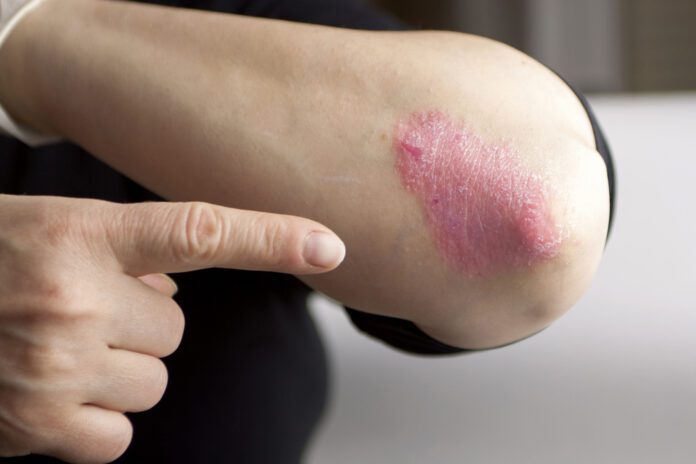Overview
Psoriasis is a chronic autoimmune skin disease that speeds up the growth cycle of skin cells. It is a skin condition that causes skin redness, silvery scales, and irritation. Most people with Psoriasis Vulgaris have thick, red, well-defined patches of skin with flaky, silver-white scales. This is called plaque Psoriasis Vulgaris.
Psoriasis Vulgaris is not contagious. This means you cannot get Psoriasis Vulgaris from contact (e.g., touching skin patches) with someone who has it.
Anyone can get Psoriasis Vulgaris. It occurs mostly in adults, but children can also get it. Men and women seem to have equal risk.
Commonly Associated With
Plaque psoriasis; Psoriasis vulgaris; Guttate psoriasis; Pustular psoriasis;Psoriasis
Cause
Psoriasis Vulgaris is common. Anyone can develop it, but it most often begins between ages 15 and 35, or as people get older.
Psoriasis Vulgaris isn’t contagious. This means it doesn’t spread to other people.
Psoriasis Vulgaris seems to be passed down through families.
Normal skin cells grow deep in the skin and rise to the surface about once a month. When you have Psoriasis Vulgaris, this process takes place in 14 days rather than in 3 to 4 weeks. This results in dead skin cells building up on the skin’s surface, forming the collections of scales.
The following may trigger an attack of Psoriasis Vulgaris or make it harder to treat:
● Infections from bacteria or viruses, including strep throat and upper respiratory infections
● Injury to the skin, including cuts, burns, insect bites, and other skin rashes
● Some medicines, including anti-malaria drugs, beta-blockers, and lithium
● Stress
● Too little sunlight
● Too much sunlight (sunburn)
Psoriasis Vulgaris may be worse in people who have a weak immune system, including people with HIV/AIDS.
Some people with Psoriasis Vulgaris also have arthritis (psoriatic arthritis). In addition, people with Psoriasis Vulgaris have an increased risk of fatty liver disease and cardiovascular disorders, such as heart disease and stroke.
Symptoms
● Psoriasis causes patches of thick red skin and silvery scales. Patches are typically found on the elbows, knees, scalp, lower back, face, palms, and soles of feet, but can affect other places (fingernails, toenails, and mouth). The most common type of psoriasis is called plaque psoriasis.
● Psoriatic arthritis is an inflammatory type of arthritis that eventually occurs in 10% to 20% of people with psoriasis. It is different from more common types of arthritis (such as osteoarthritis or rheumatoid arthritis) and is thought to be related to the underlying problem of psoriasis.
● Psoriasis and psoriatic arthritis are sometimes considered together as psoriatic diseases.
Treatment
Psoriasis often has a typical appearance that a primary care doctor can recognize, but it can be confused with other skin diseases (like eczema), so a dermatologist (skin doctor) is often the best doctor to diagnose it. The treatment of psoriasis usually depends on how much skin is affected, how bad the disease is (e.g., having many or painful skin patches), or the location (especially the face). Treatments range from creams and ointments applied to the affected areas to ultraviolet light therapy to drugs (such as methotrexate). Many people who have psoriasis also have serious health conditions such as diabetes, heart disease, and depression. Some people with psoriasis also have an inflammatory condition that affects their joints, called psoriatic arthritis.
Psoriatic arthritis has many of the same symptoms as other types of arthritis, so a rheumatologist (arthritis doctor) is often the best doctor to diagnose it. The treatment of psoriatic arthritis usually involves the use of drugs (such as methotrexate).
Psoriatic arthritis has many of the same symptoms as other types of arthritis, so a rheumatologist (arthritis doctor) is often the best doctor to diagnose it. The treatment of psoriatic arthritis usually involves the use of drugs (such as methotrexate).
Exams and Tests
Your health care provider can usually diagnose this condition by looking at your skin.
Sometimes, a skin biopsy is done to rule out other possible conditions. If you have joint pain, your provider may order imaging studies.
Source
https://www.cdc.gov/psoriasis/index.htm



